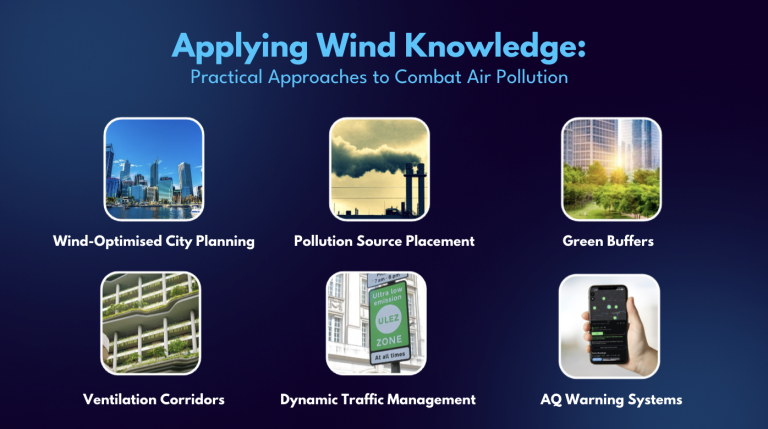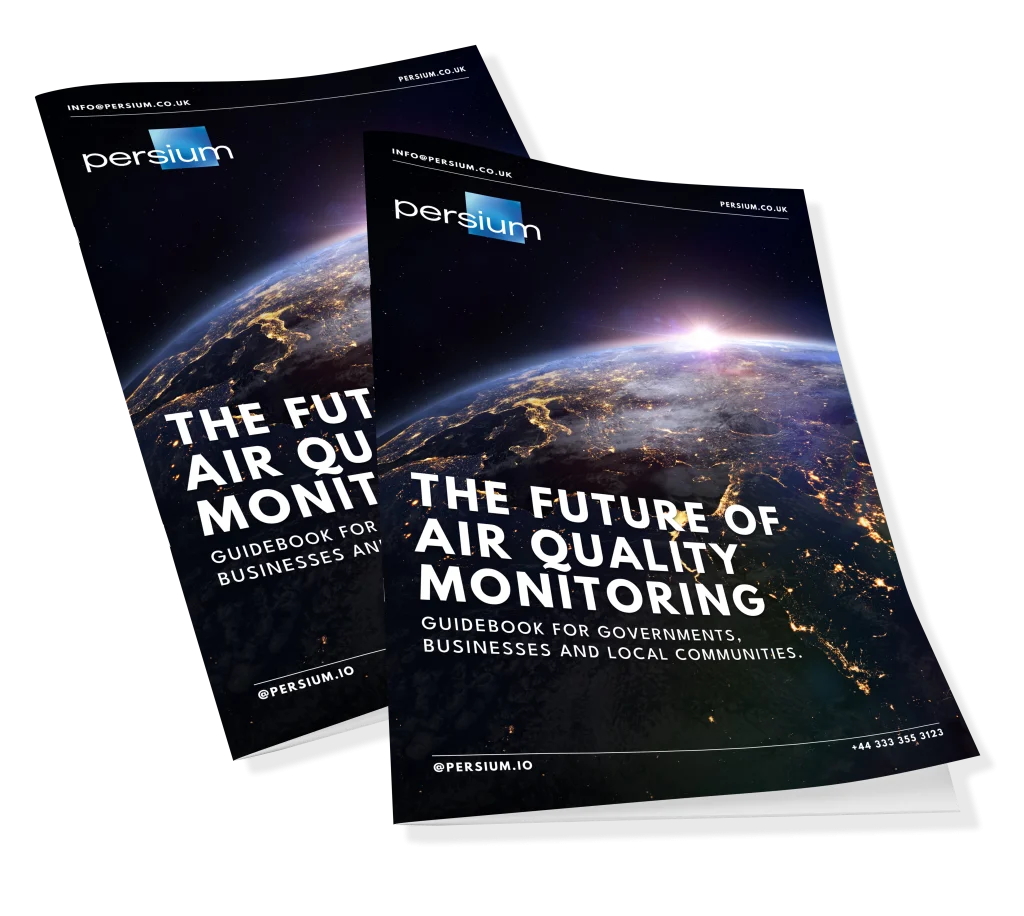Reading Time: 3 minutes
Air pollution in cities across the globe has been a pressing issue, claiming countless lives and deteriorating our environment. As air quality monitoring becomes indispensable for cities, our pursuit of healthier urban environments draws attention toward an often underestimated ally – the wind. To really get to grips with making city air cleaner, we need to dive into understanding how the wind works. It’s more than just weather patterns – it’s about how it moves and spreads pollution around in our cities.
Why Understanding Pollution Movement is Key
“Street canyons,” which are tight spaces between tall buildings, are particularly important as they can guide or trap wind and pollution. It’s like an invisible maze where wind pushes pollution in different directions. Understanding this is key to creating effective strategies to keep our city air as clean as possible.

Understanding the levels and locations of pollution is just the starting point. Grasping how pollution moves, where it comes from, and the paths it takes through our city streets, all under the influence of the wind, is crucial. This insight lets us make informed decisions to tackle pollution more effectively at its source, rather than just dealing with its after-effects.
Creating a Holistic View: Merging Wind and Pollution Data
To truly grasp urban air quality trends, we need to weave together the threads of wind dynamics and pollution data. By integrating real-time data on pollution levels with how the wind is moving, we can create a detailed map of pollution movement. This not only helps us comprehend how pollution travels but also allows us to evaluate and plan our counteraction strategies better.
Tackling pollution effectively isn’t just about understanding it, but also about having strategies that can adapt in real-time. Using wind dynamics, we can comprehend how pollution plumes spread and use this knowledge to enhance our pollution counteraction strategies – from placing green spaces in strategic locations to smart positioning of pollution sources.
Applying Wind Knowledge: Practical Approaches to Combat Air Pollution
1. Wind-Optimised City Planning:
By using our knowledge of wind patterns and street canyons, city planning can efficiently channel wind to disperse pollutants. Strategic placement of buildings and green spaces could guide wind and pollutants away from busy areas.
2. Pollution Source Placement:
Locating pollution sources, such as factories, according to dominant wind directions can minimise impact on residential areas, directing pollutants away from the city and mitigating impact on citizens.
3. Green Buffers:
Developing “green buffers” of trees and vegetation in targeted areas can serve as a barrier and filter, reducing the movement of pollutants into residential zones. Wind can spread pollutants over these areas, where plants absorb some particles and gases, acting as a natural filter.
4. Ventilation Corridors:
Creating ventilation corridors, or pathways to allow wind to flow freely, helps carry away pollutants. Strategic design of streets and buildings can create pathways that enable wind to sweep pollutants out of the city or into less harmful areas.
5. Dynamic Traffic Management:
Using knowledge of how wind transports vehicular pollution can inform dynamic traffic management. Limiting or rerouting traffic during specific wind conditions could stop pollutants from accumulating in sensitive areas, such as near schools or hospitals.
6. Responsive Air Quality Warning Systems:
Implementing warning systems that respond to combined data on wind patterns and pollution levels can inform citizens. On days when wind may carry higher pollution into certain areas, warnings can be issued, advising residents to stay indoors or wear masks.

Conclusion
Understanding how wind sweeps through our cities helps us find a way to cleaner, healthier places to live. Think of wind as a guide showing us how pollution interacts with our streets, buildings and architecture. When we really understand how wind and pollution interact, we can create plans to make our air cleaner and our future greener. By combining this wind knowledge with pollution information, we get a full picture of our city’s air quality. This understanding helps cities create better plans for a future where our air is as clean as our hopes and dreams for our cities.




